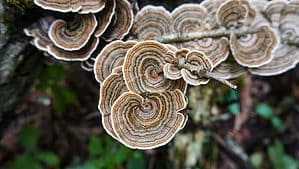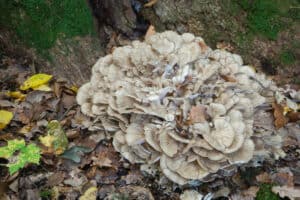If you’re wondering if you have to cook mushrooms, or if you can eat them raw, you may have come across conflicting information in your research. Some sites seem to give a big thumbs up about eating edible mushrooms raw, while others caution to always thoroughly cook every single species. Ultimately, there is no hard and fast answer to this question that neatly addresses all species of edible mushrooms.
In this guide, we will err on the side of caution when addressing this complex topic.
Read on to learn everything you need to know about whether or not you need to cook your mushrooms.
So, Do You Always Need to Cook Mushrooms?
The claim that you should always thoroughly cook mushrooms is based on three main points:
- Chitin, the fibrous polysaccharide that largely comprises fungi cell walls, is difficult to digest in its raw form. Some folks can experience stomach upset due to this.
- Edible mushrooms are often much more flavorful when cooked in various forms. Most people simply enjoy the flavor and texture of mushrooms more when they’re cooked. One exception is delicate shavings of raw truffles.
- And most importantly, some species of edible mushrooms are only safe to consume when thoroughly cooked. When consumed raw, some species can cause illness or even death.
The third point is of course the most important. It would be a serious tragedy to become seriously ill or die from eating a raw mushroom. Especially when it could have been rendered safe(r) through cooking.
Considering these compelling points, our stance is that unless you are a mushroom expert who understands the potential toxins present in a given species and how various methods of cooking may or may not degrade that toxin, it’s best practice to always thoroughly cook your mushrooms.
Below, to further illustrate our stance, we’ll talk about three species of mushrooms. They are mushrooms that are much safer to eat when cooked, resulting in the reduction of the risk of gastrointestinal upset to serious illness.
Important Note: You may hear some people or sources claim that you can eat any mushroom as long as you thoroughly cook it. This is simply not true as many poisonous mushrooms contain toxins that are heat-stable and will not degrade by cooking. Amatoxin-containing mushrooms in the Amanita genus are a prime example of deadly mushrooms that remain deadly even when thoroughly cooked since amatoxins are heat-stable.
1. Morels (Morchella spp.)
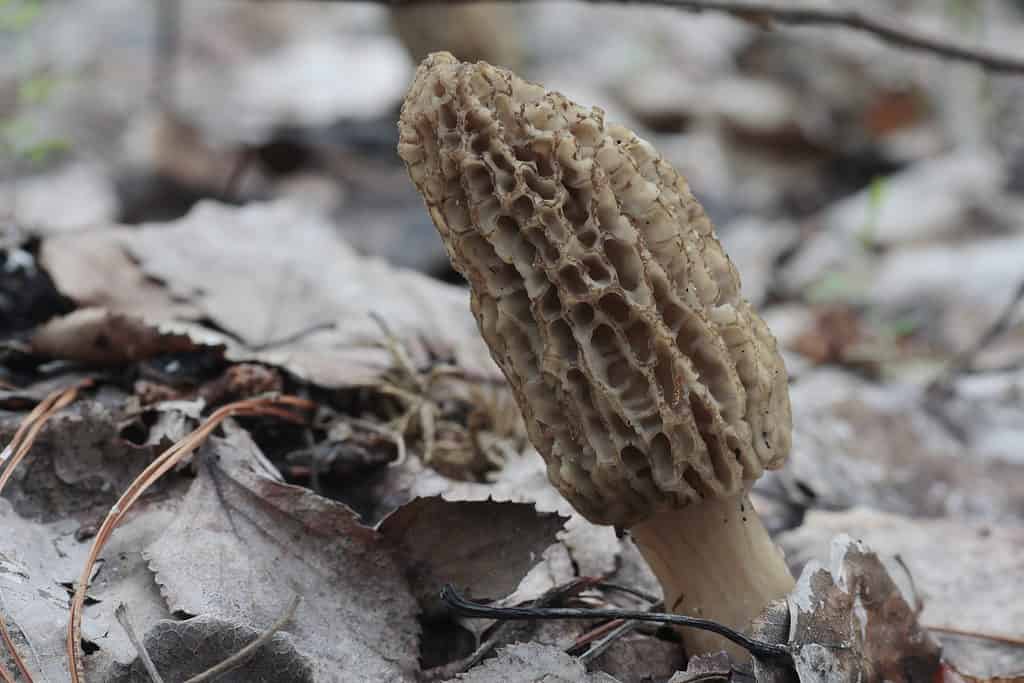
Morels are considered choice edibles, but must be cooked thoroughly.
©ressormat/Shutterstock.com
One of the most famous and sought-after wild mushrooms, true morels of the Morchella genus, contain small amounts of a toxin which thorough cooking degrades. If you eat this mushroom raw, dried (without rehydrating and cooking), or crudely cooked, you may experience gastrointestinal distress and even neurological symptoms. Some researchers hypothesize this toxin is hydrazine or its derivatives, although this remains to be widely confirmed.
To safely consume morels, you should cook them thoroughly. Cooking for at least 10 minutes, until the heat renders them thoroughly browned. At this point, they’ll not only be much safer to eat, but they’ll also taste amazing! For a simple, but delicious dish, you can cook them with a pinch of salt, butter (dairy or vegan), and garlic. Some people prefer to add the salt towards the end as it can release moisture that will make browning a little more difficult to accomplish.
2. Chicken of the Woods (Laetiporus sulphureus)
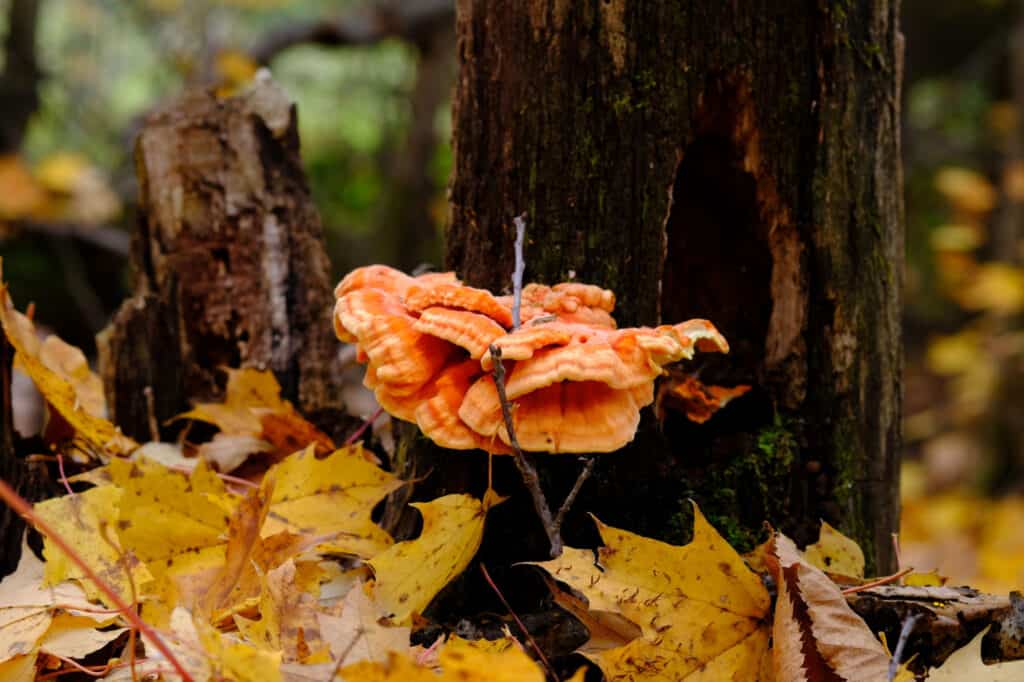
Not many mushroom look like the chicken of the woods mushroom.
©nomis_h/Shutterstock.com
A delicious choice edible when cooked, chicken of the woods (Laetiporus sulphureus and similar species) can frequently cause varying degrees of gastrointestinal upset if you consume it raw or crudely cooked. Some folks don’t tend to fare well with this species regardless of how well they cook chicken of the woods. A good rule of thumb when consuming a new-to-you (100% confirmed) edible mushroom is to thoroughly cook and consume a small bite-sized amount and wait 24 hours to see how your gastrointestinal system reacts before eating any more.
An excellent meat substitute, chicken of the woods is a great choice for breading and frying, grilling, pan-frying, or roasting. Young specimens are far more tender and will taste much better than aged tough ones.
3. Honey Mushrooms (Armillaria mellea and Desarmillaria caespitosa)
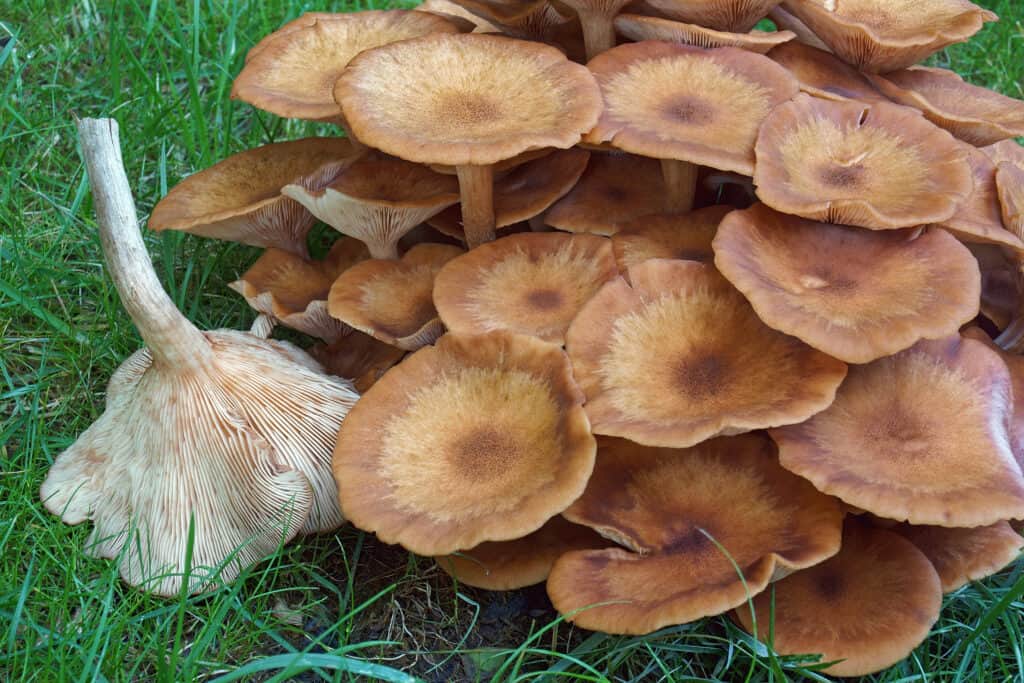
Clusters of Ringless Honey Cluster Mushrooms often grow on wood and tree stumps.
©iStock.com/nickkurzenko
Both ringed and ringless honey mushrooms (Armillaria mellea and Desarmillaria caespitosa respectively) are common and widely foraged edible mushrooms. However, honey mushrooms typically cause mild to severe gastrointestinal upset when consumed raw. You should also take additional care to avoid harvesting its deadly lookalike, the deadly galerina (Galerina marginata).
Honey mushrooms are especially popular in Eastern European cuisine. It’s a common (and delicious) ingredient in pierogi. Most folks recommend not only sauteing but boiling or par-boiling these mushrooms first for 5-10 minutes to help reduce sliminess during sauteing. After boiling in water, you can pan fry for another 10-15 minutes until the mushrooms are thoroughly browned. In addition to being wonderful for use in pierogi, they also make amazing vegan sloppy joes!
The photo featured at the top of this post is © Cavan-Images/Shutterstock.com
The information presented on or through the Website is made available solely for general informational purposes. We do not warrant the accuracy, completeness, or usefulness of this information. Any reliance you place on such information is strictly at your own risk. We disclaim all liability and responsibility arising from any reliance placed on such materials by you or any other visitor to the Website, or by anyone who may be informed of any of its contents. None of the statements or claims on the Website should be taken as medical advice, health advice, or as confirmation that a plant, fungus, or other item is safe for consumption or will provide any health benefits. Anyone considering the health benefits of particular plant, fungus, or other item should first consult with a doctor or other medical professional. The statements made within this Website have not been evaluated by the Food and Drug Administration. These statements are not intended to diagnose, treat, cure or prevent any disease.
Thank you for reading! Have some feedback for us? Contact the AZ Animals editorial team.




